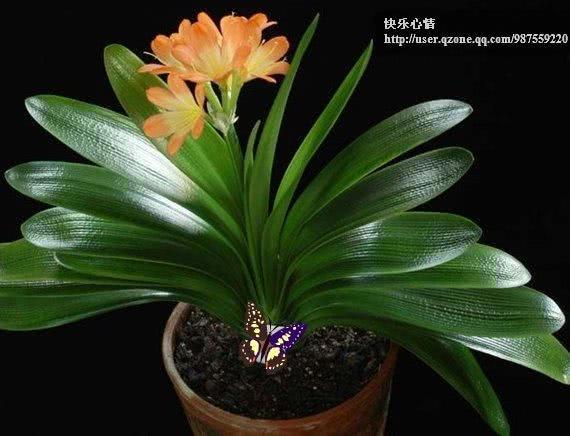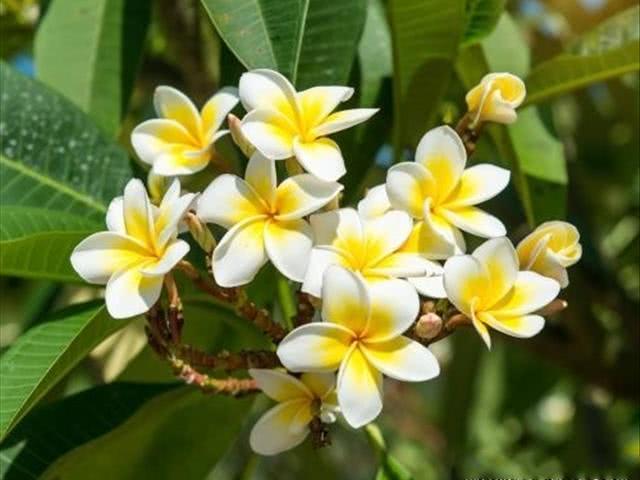Don't grow flowers indiscriminately. The most basic knowledge of growing flowers.

1. Gentleman orchid: a freshener that releases oxygen and absorbs smoke.
An adult magnolia can absorb 1 liter of air and release 80% oxygen in a day and night, and photosynthesis can occur in extremely weak light. It does not emit carbon dioxide at night. In a room of more than ten square meters, two or three pots of magnolia can absorb the indoor smoke. Especially in the cold winter in the north, because the doors and windows are closed and the indoor air is not ventilated, the gentleman orchid will play a good role in regulating the air and keeping the indoor air fresh.
2. African jasmine: the volatile oil produced has a significant germicidal effect; it can make people relax, help to sleep, and improve work efficiency.
3. White palm: inhibit the exhaust gas exhaled by the human body, such as ammonia and acetone. It can also filter benzene, trichloroethylene and formaldehyde in the air. Its high evaporation rate can prevent dryness of nasal mucosa and greatly reduce the possibility of disease.
4. Silver Queen: it is famous for its unique air purification ability: the higher the concentration of pollutants in the air, the more it can exert its purification ability, so it is very suitable for dark rooms with poor ventilation.
5. Dryopteris: it can absorb about 20 micrograms of formaldehyde per hour, so it is considered to be the most effective biological "purifier". People who deal with paint or paint all day long, or people who like to smoke around them, should put at least one fern in the workplace. In addition, it can also inhibit the release of xylene and toluene from computer monitors and printers.
6. Duck foot wood: bring fresh air to smoking families. Leaves can absorb nicotine and other harmful substances from the smoky air and convert them into harmless plant-owned substances through photosynthesis. In addition, it can reduce formaldehyde concentration by about 9 milligrams per hour.
7. Hanging orchid: it can absorb 95% carbon monoxide and 85% formaldehyde in the air.
The orchid can carry out photosynthesis in weak light, and the orchid can absorb poisonous and harmful gases in the air. A pot of orchid is equivalent to an air purifier in a room of 8 square meters. Generally raise 1-2 pots of orchids in the room, which can release oxygen in 24 hours and absorb carcinogens such as formaldehyde, styrene, carbon monoxide and carbon dioxide in the air. The orchid has a particularly strong absorption of some harmful substances, such as carbon monoxide and formaldehyde mixed in the air, which can reach 95% and 85% respectively; the orchid can also decompose benzene and absorb relatively stable harmful substances such as nicotine in cigarette smoke; therefore, the orchid is also called the green purifier of indoor air.
8. Aloe: a pot of aloe is equivalent to nine biological air cleaners.
Potted aloe has a reputation as an expert in air purification. A pot of aloe is equal to nine biological air cleaners, which can absorb harmful substances such as formaldehyde, carbon dioxide, sulfur dioxide and carbon monoxide, especially formaldehyde; under the condition of 4 hours of light, a pot of aloe can eliminate 90% of formaldehyde in a square meter of air, kill harmful microorganisms in the air, and absorb dust, which plays an important role in purifying the indoor environment. When the indoor harmful air is too high, the leaves of aloe will appear spots. This is the signal for help, as long as a few more pots of aloe are added indoors, the indoor air quality will tend to normal again.
9. Tortoise back bamboo: absorb carbon dioxide at night to improve air quality.
The function of the tortoise back bamboo to purify the air is slightly weaker, it is not like hanging orchid, aloe is the generalist of purifying the air. However, the effect of tortoise back bamboo on removing formaldehyde from the air is more obvious; in addition, tortoise back bamboo has the effect of absorbing carbon dioxide at night, which is of great help to improve indoor air quality and increase oxygen content; in addition, tortoise back bamboo is generally larger and elegant, and the leaves are more sparse and beautiful, so it is a very ideal indoor plant. The fruit of the tortoise-backed bamboo can be cooked when it is ripe and tastes like pineapple or banana.
Ivy: the champion of absorbing formaldehyde.
Ivy is currently the most effective indoor plant that absorbs formaldehyde. The leaves of ivy per square meter can absorb 1.48 mg of formaldehyde, while the total leaf area of 2 pots of adult ivy is about 0.78 square meters. At the same time, ivy can also absorb benzene, a toxic and harmful substance, and can absorb 90% of indoor benzene under 24-hour light. It is speculated that in a room of 10 square meters, only 2-3 pots of ivy can purify the air; it can also absorb particulate dust.
Rubber tree: a generalist who eliminates harmful substances.
Rubber tree is a generalist who eliminates harmful plants and is resistant to harmful gases such as carbon monoxide, carbon dioxide and hydrogen fluoride in the air. Rubber tree can also eliminate the pollution of respirable particles and effectively detain indoor dust.
12. Asparagus: a protective umbrella to eliminate bacteria and viruses.
Asparagus contains plant aroma with antibacterial ingredients, can remove bacteria and viruses in the air, with health care function, so the smell released by asparagus has the power of sterilization and benefit. In addition, asparagus also has high medicinal value. Dig up its fleshy roots, wash away the dirt and dirt, dry them for use or fresh, pick leafy branches whenever they are used, and all have the effects of relieving cough, moistening the lungs, cooling blood and detoxification.
13. Brown bamboo: eliminate heavy metal pollution and carbon dioxide.
The function of brown bamboo is similar to that of tortoise back bamboo. Brown bamboo, which also belongs to large-leaf ornamental plants, can absorb more than 80% of harmful gases and purify the air. At the same time, brown bamboo can also eliminate heavy metal pollution and resist sulfur dioxide pollution to a certain extent. Of course, as foliage plants with large leaves, their greatest feature is that they have the function of digesting carbon dioxide and producing oxygen that ordinary plants cannot do.
14. Rich bamboo: a healthy plant suitable for the bedroom.
Rich bamboo can help rooms that do not often open windows to improve air quality and have the function of disinfection; especially in bedrooms, rich bamboo can effectively absorb exhaust gas and improve the private environment of the bedroom.
15. Rich tree: fight against the exhaust gas produced by tobacco burning.
The rich tree is evergreen all the year round, can absorb toxic gases and release oxygen through photosynthesis, can effectively absorb the pollution of carbon monoxide and carbon dioxide, and play a certain role in resisting the exhaust gas produced by tobacco combustion.
16. Green pineapple: improve air quality and eliminate harmful substances.
Green pineapple has strong vitality and strong ability to absorb harmful substances, which can help rooms that do not often open windows to improve air quality; green pineapple can also eliminate harmful substances such as formaldehyde, and its function is no less than that of ivy and orchids.
Cactus: the best plant to reduce electromagnetic radiation.
Cactus has a strong effect of anti-inflammation and sterilization. In dealing with pollution, cactus is the best plant to reduce electromagnetic radiation. In addition, the cactus absorbs carbon dioxide and releases oxygen at night. There is a cactus in the room at night, which can replenish oxygen and help sleep.
- Prev

When I met a man selling wild vegetables with a white stick, many people had never eaten nutrition and had a good hemostatic effect.
On the road, I met a man selling a white vegetable, which was like a white stick, of different lengths, and was regularly placed on the banana leaves. Only after asking, did I know that this is a wild banana core, a wild vegetable that can be eaten. Actually, ba.
- Next

There are also some tips for growing flowers. We use these good things to water the flowers and grow quickly.
The original title: there are still some tips for growing flowers. We use these good things to water the flowers and grow quickly! Abstract: we also have some skills when growing flowers, we use these good things to water the flowers, we can make your flowers grow.
Related
- Wuhan Hospital Iron Tree Blooming Result Was Instantly Frightened by the Gardener Master
- Which variety of camellia is the most fragrant and best? Which one do you like best?
- What is the small blue coat, the breeding methods and matters needing attention of the succulent plant
- Dormancy time and maintenance management of succulent plants during dormancy
- Minas succulent how to raise, Minas succulent plant pictures
- What are the varieties of winter succulent plants
- How to raise succulent plants in twelve rolls? let's take a look at some experience of breeding twelve rolls.
- Attention should be paid to water control for succulent plants during dormant period (winter and summer)
- Watering experience of twelve rolls of succulent plants
- Techniques for fertilizing succulent plants. An article will let you know how to fertilize succulent plants.

